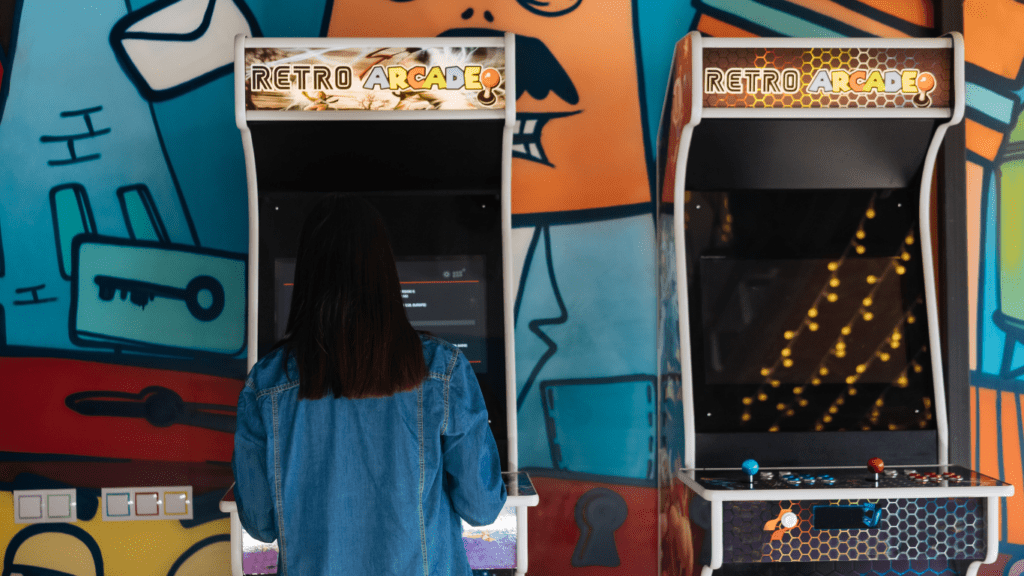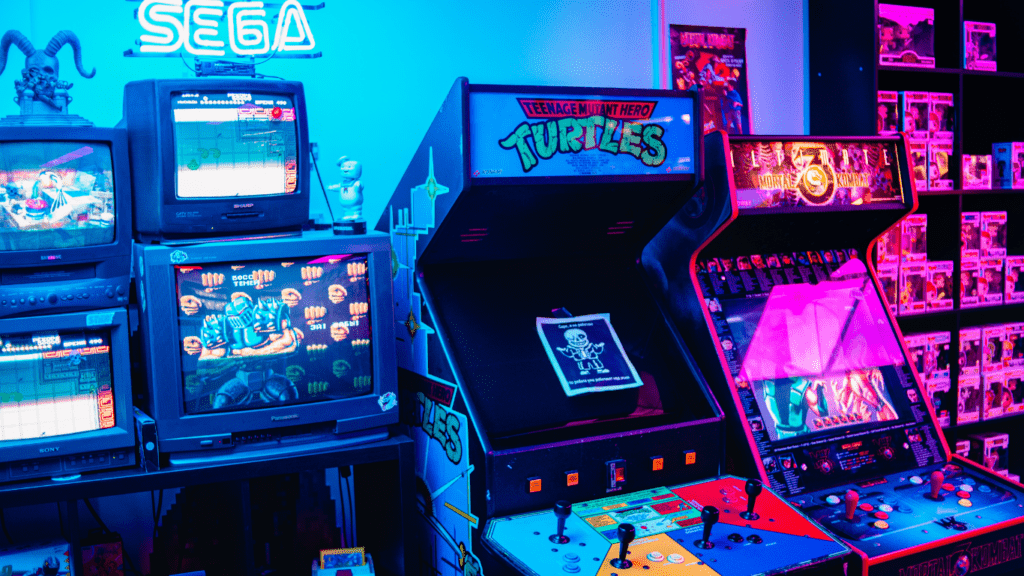As a passionate gamer, I’ve always been intrigued by the ongoing debate surrounding retro gaming revival. The clash between nostalgia and innovation in the gaming industry has sparked a wave of discussions among enthusiasts and critics alike. In this article, we’ll delve into the heart of this controversy to explore whether the resurgence of retro gaming is a mere trip down memory lane or a groundbreaking shift in the gaming landscape.
From the pixelated charm of classic arcade games to the resurgence of iconic franchises, the retro gaming trend has captured the attention of both seasoned players and a new generation of gamers. As I navigate through the realms of retro gaming, I aim to uncover the underlying motivations driving this revival and examine the impact it’s having on the gaming industry as a whole. Join me on this journey as we unravel the intricate relationship between nostalgia and innovation in the world of gaming.
The Rise of Retro Gaming
Retro gaming has experienced a resurgence in recent years, captivating gamers of all ages with its nostalgic appeal and timeless gameplay. As a passionate gamer myself, I delve into the fascinating world of retro gaming and explore the factors fueling its popularity.
Trigger Factors for Retro Gaming Popularity
- Nostalgic Appeal
Retro games evoke cherished memories of bygone eras, resonating with players who fondly recall the classic titles of their youth. - Simplicity and Accessibility
Many retro games feature straightforward gameplay mechanics that are easy to pick up and play, making them appealing to both seasoned gamers and newcomers alike. - Embracing Heritage
The retro gaming community celebrates gaming history by preserving and rediscovering older titles, fostering a deep appreciation for the roots of modern gaming. - Nintendo
A pioneer in the gaming industry, Nintendo continues to dominate the retro gaming market with its re-releases of iconic consoles like the NES and SNES, appealing to fans seeking a nostalgic gaming experience. - SEGA
Another key player in the retro gaming scene, SEGA maintains a strong presence with its classic consoles and beloved franchises such as Sonic the Hedgehog, catering to fans of 90s gaming nostalgia.
By recognizing the trigger factors driving retro gaming’s popularity and acknowledging the key players shaping the market, we gain valuable insights into the enduring appeal of retro gaming in a constantly evolving industry.
Nostalgia’s Role in Retro Gaming

Exploring the psychological appeal of retro games reveals a fascinating aspect of their enduring popularity. These games evoke a sense of nostalgia, transporting players back to simpler times when gaming was a pure and immersive experience. The familiarity of retro games taps into our emotions, triggering fond memories and a sense of comfort that modern titles may not always provide.
When it comes to marketing tactics in the retro gaming industry, nostalgia plays a pivotal role. Gaming companies leverage nostalgia by re-releasing classic titles, remastering beloved games, and reviving iconic consoles to cater to the nostalgic sentiments of players. By tapping into this emotional connection, companies create a unique selling point that resonates with both seasoned gamers seeking a trip down memory lane and newer audiences intrigued by the charm of retro gaming.
Technological Innovations in Retro Gaming
In the realm of retro gaming, technological advancements have played a pivotal role in preserving and enhancing classic gaming experiences. Let’s delve into how new hardware and modern games with retro aesthetics have revitalized the retro gaming landscape.
New Hardware Supporting Old Classics
One of the significant technological advancements in retro gaming is the development of new hardware that supports old classics. Companies like Analogue and Hyperkin have engineered modern consoles that are compatible with original cartridges, allowing players to experience classic games in high definition on modern televisions. These systems not only preserve the authenticity of retro gaming but also enhance the visual and audio quality, offering a seamless bridge between the past and the present.
Modern Games with Retro Aesthetics
In the current gaming industry, we’re witnessing a surge in modern games that embrace retro aesthetics while incorporating contemporary gameplay mechanics. Titles like “Stardew Valley” and “Shovel Knight” pay homage to the 8-bit and 16-bit era with pixel art graphics and chiptune soundtracks, delivering a nostalgic experience for players. These games blend the best of both worlds by infusing classic elements with innovative gameplay, attracting a wide audience keen on rediscovering the charm of retro gaming in a fresh, modern context.
By amalgamating new hardware solutions with modern games that exude retro aesthetics, the retro gaming landscape has evolved to cater to a diverse demographic of players seeking a blend of nostalgia and innovation.
Case Studies: Successful Retro Gaming Projects
Indie Developers and Retro-Style Games
Exploring the realm of indie developers and their influence on the retro gaming scene, I’ll delve into how these creative minds have brought a fresh perspective to classic aesthetics. Titles like “Undertale” and “Celeste” have captivated players by blending retro graphics with modern storytelling, showcasing the enduring appeal of pixel art and chiptune music. Indie studios continue to redefine retro gaming by infusing it with innovative gameplay mechanics, attracting a new wave of gamers seeking a nostalgic yet refreshing experience.
Major Companies Rebooting Classic Titles
Reflecting on major players in the gaming industry, I’ll analyze their strategies in reviving timeless classics for contemporary audiences. Companies like Capcom with the “Resident Evil” remakes and Square Enix’s reimagining of “Final Fantasy VII” have set new standards for bringing retro titles into the modern era. These successful reboots demonstrate the demand for nostalgia-driven content among gamers, driving sales and reinforcing the enduring legacy of retro gaming in today’s market.
Consumer Response and Market Trends
Exploring the consumer response and market trends in the retro gaming industry unveils fascinating insights into the evolving landscape of gaming.
Demographics of Retro Gamers
Retro gaming has a broad appeal across diverse age groups, attracting both seasoned gamers seeking nostalgia and younger players intrigued by gaming heritage. It bridges generational gaps, catering to individuals who appreciate the simplicity and classic charm of retro games. This inclusive nature of retro gaming transcends age barriers, fostering a thriving community of enthusiasts dedicated to preserving the legacy of vintage gaming experiences.
Future Projections for Retro Gaming Industry
The future of the retro gaming industry appears promising, with projections indicating sustained growth and innovation. As technology advances, the integration of retro aesthetics with modern gameplay mechanics is likely to expand, attracting a broader audience looking for a blend of nostalgia and innovation. With an increasing focus on preserving gaming heritage and reviving classic titles, the retro gaming industry is poised to continue its upward trajectory, captivating both existing fans and newcomers to the retro gaming scene.
Tammylie Romanors
Tammylie Romanors is the visionary founder and a prolific article writer for Gear Up Play On, a premier platform dedicated to providing gamers with professional, friendly, and trusted content. With an unwavering passion for gaming and a comprehensive understanding of the industry, Tammylie has built Gear Up Play On into a leading resource for gamers worldwide. Her journey began with a love for gaming that evolved into a mission to create a space where gamers could find reliable and innovative information.



